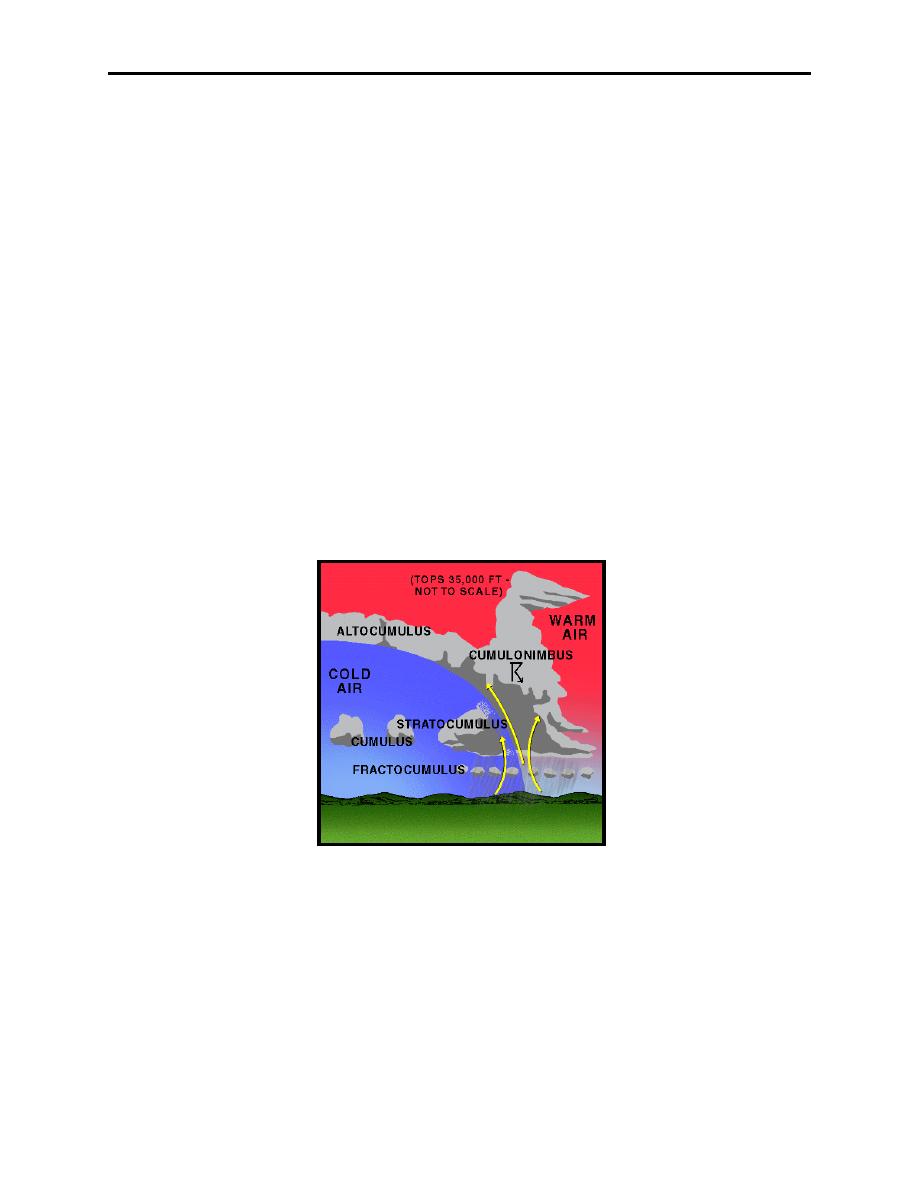 |
|||
|
|
|||
|
|
|||
| ||||||||||
|
|  AVIATION WEATHER
CHAPTER FIVE
2.
Avoid the rotor, lenticular, and the cap clouds since they contain intense turbulence and
strong updrafts and downdrafts.
3.
Approach the mountain range at a 45 angle, so a quick turn can be made away from the
ridge if a severe downdraft is encountered.
4.
Avoid the leeward side of mountain ranges, where strong downdrafts may exist, until
certain turbulence is not a factor.
5.
Do not place too much confidence in pressure altimeter readings near mountain peaks.
They may indicate altitudes more than 2500 feet higher than the true altitude.
6.
Slow to the turbulence penetration airspeed recommend in your aircraft NATOPS or
Dash-One Technical Order.
Frontal Turbulence
Frontal turbulence is caused by lifting of warm air, a frontal surface leading to instability, or the
abrupt wind shift between the warm and cold air masses. The vertical currents in the warm air
are the strongest when the warm air is moist and unstable. The most severe cases of frontal
turbulence are generally associated with fast-moving cold fronts. In these cases, mixing between
the two air masses, as well as the differences in windspeed and or direction (wind shear), add to
the intensity of the turbulence.
Figure 5-6 Frontal Turbulence
Ignoring the turbulence resulting from any thunderstorm along the front, Figure 5-6 illustrates
the wind shift contributing to the formation of turbulence across a typical cold front. The wind
speeds are normally greater in the cold air mass.
Wind Shear Turbulence
Large-scale wind shear turbulence results from a relatively steep gradient in wind velocity or
direction producing eddy currents that result in turbulence. Wind shear is defined as a sudden
Weather Hazards of Turbulence, Icing, Ceilings, Visibility, and Ash Clouds
5-9
|
|
Privacy Statement - Press Release - Copyright Information. - Contact Us |